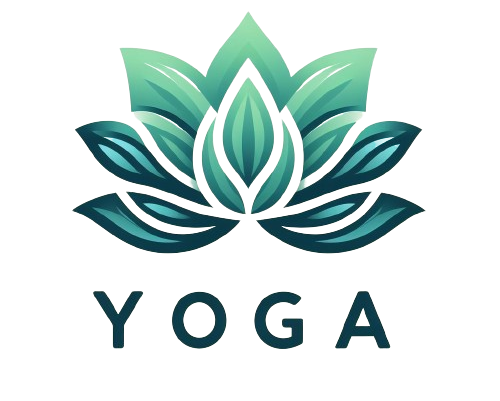In meditation practices, chakra meditation stands out as a profoundly effective method for aligning and balancing the energy centers in our body, known as chakras. This form of meditation delves deep into the ancient roots of spiritual traditions, primarily originating from Hinduism and Buddhism, providing practitioners a path to wellness that transcends the physical, reaching emotional and spiritual realms.
Understanding Chakras
Understanding the concept of chakras is essential for anyone delving into the practice of chakra meditation. Originating from ancient Eastern spiritual traditions, the term “chakra” is derived from the Sanskrit word for “wheel” or “disk.” These chakras are envisioned as spinning wheels of energy, each situated at specific points along the spine, from the base up to the crown of the head. Functioning as the nexus of spiritual energy in the human body, each chakra is closely aligned with a variety of physical attributes, including nerve centers and vital organs, bridging the divide between the physical and metaphysical aspects of our being.
The seven main chakras each govern distinct components of our physiological, emotional, and spiritual health:
Root Chakra (Muladhara): located at the base of the spine in the tailbone area, this chakra is responsible for our sense of security and survival. It is the foundation of our energy system, anchoring us and giving us the feeling of being grounded.
Sacral Chakra (Svadhishthana): situated just below the navel, the sacral chakra is the center of our feelings and emotions, sexuality, pleasure, and creative expression. It influences our ability to enjoy life’s pleasures without guilt.
Solar Plexus Chakra (Manipura): this chakra, found around the stomach area, dictates our self-esteem and confidence, as well as our ability to assert personal power in a balanced manner. It plays a significant role in decision-making and personal control.
Heart Chakra (Anahata): located in the center of the chest, the heart chakra is the well of love, warmth, compassion, and joy. It fosters connections with others and is the center through which we can express love and empathy.
Throat Chakra (Vishuddha): positioned at the base of the neck, the throat chakra enables communication, self-expression, and the articulation of our truth. It is integral in the honesty and integrity of our communications.
Third Eye Chakra (Ajna): this chakra sits between the eyebrows and governs intuition and the ability to recognize and tap into wisdom. It’s also involved in our capacity to visualize and understand mental concepts.
Crown Chakra (Sahasrara): at the very top of the head, the crown chakra connects us to higher states of consciousness and the divine. It plays a crucial role in spiritual growth and enlightenment.
Each chakra corresponds to specific physical regions and relates to our psychological, emotional, and spiritual states. When these chakras are open and aligned, our energy is in balance, resulting in a sense of well-being and holistic health. If any of these chakras are blocked, it can lead to emotional or physical symptoms indicative of imbalance, which chakra meditation aims to address.
The Benefits of Chakra Meditation

The practice of chakra meditation is rich with benefits that stretch across the spectrum of human experience, touching on physical, emotional, and spiritual aspects of life. By engaging with the energy centers known as chakras, those who meditate can tap into often overlooked faculties of their being.
In physical health, the balancing and aligning of chakras play a critical role. It’s not uncommon for practitioners to report improvements in various bodily functions which can include better digestion, enhanced sleep quality, and reduced physical pain. Some believe that by activating and harmonizing the chakras, underlying causes of certain medical conditions can be addressed, facilitating a pathway to healing that conventional medicine might miss.
Chakra meditation also acts as a conduit for emotional cleansing. During practice, individuals have the opportunity to confront and release emotions that have been suppressed or ignored. This emotional release is pivotal for mental well-being as it clears mental blockages and allows for greater peace and clarity. Rather than being prisoners to unacknowledged or unresolved feelings, practitioners find themselves liberated, able to approach life with a refreshed perspective and an open heart.
Beyond clearing emotional clutter, chakra meditation fosters a profound self-awareness that deepens with regular practice. This awareness builds a bridge between physical symptoms and emotional states, helping individuals better understand how their feelings can manifest as physical discomfort or illness. Such insights often lead to holistic approaches to personal health and lifestyle, as practitioners learn to listen closely to what their bodies and emotions are communicating
Stress reduction through chakra meditation is another significant benefit. This form of meditation helps soothe the nervous system and promotes a deep state of relaxation not just physically but energetically. As practitioners focus on each chakra and bring the energies into alignment, a sense of calm permeates their being, often radiating outward to influence their everyday lives, making stress manageable and less overwhelming.
The aspect of spiritual growth cannot be overlooked. Chakra meditation offers more than just temporal benefits; it paves the way to expansive spiritual exploration. This practice encourages practitioners to delve into deeper states of meditation, which can lead to profound revelations and a heightened sense of connection with the universe. Often, those who engage regularly in chakra meditation feel an expansion of their spiritual selves, discovering a greater purpose and a clearer path toward spiritual enlightenment.
Through these extensive benefits, chakra meditation proves to be more than just a practice but a transformative experience that enhances the quality of life on multiple levels, helping individuals to achieve balance, clarity, and a deeper connection with their inner selves.
Techniques for Chakra Meditation
Getting started with chakra meditation involves a set of techniques that help in focusing and channeling energy through the chakras. Here’s a simple guide to begin practicing:
- Preparation
Find a quiet space where you won’t be disturbed. Sit in a comfortable position, preferably in the traditional lotus or a simple crossed-legged posture. Keep your spine straight to allow free flow of energy.
- Grounding
Imagine roots extending from your body into the earth, grounding and stabilizing you. This visualization helps prepare your Root Chakra for activation.
- Visualization
Close your eyes and focus on each chakra starting from the root to the crown. Envision a spinning wheel filled with color at each chakra location: red at the root, orange at the sacral, yellow at the solar plexus, green at the heart, blue at the throat, indigo at the third eye, and violet at the crown. This visualization helps in engaging each energy center.
- Breathing
Practice deep, slow breathing. As you inhale and exhale, imagine your breath reaching each chakra, enhancing its color, and increasing its vitality.
- Mantras and Sounds
Each chakra is associated with certain sounds or mantras. Reciting these can amplify the chakra’s energy and aid in its balancing. For instance, the root chakra’s mantra is “LAM.”
- Duration and Frequency
Begin with a smaller duration, perhaps five to ten minutes per session, and gradually extend as you grow more comfortable and attuned to the process. Regularity is key – aim for at least once a day.
